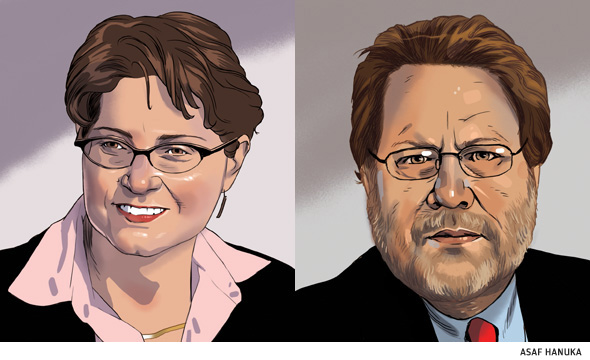
In 1996, Sherry Linkon and John Russo led the effort to create the Center for Working-Class Studies at Youngstown State University in Ohio. Youngstown is a former steel town that became a case study for the effects of deindustrialization in the 1970s and ’80s, and the center was the first academic program in the US to focus on work and class. Its mission was “to increase awareness of and respect for working-class life and culture through education, the arts, media, and research.” Over the next 16 years, the husband-and-wife team and their colleagues helped shape the emerging public conversation about class and economic inequality in America, often working with journalists who were trying to make sense of shifting economic fault lines. Then, last year, Linkon accepted a job at Georgetown University, Russo retired, and Youngstown State announced that it would not continue to fund the center. CJR‘s Brent Cunningham spoke to them in January about class in America.
How has the understanding of social class changed since 1996?
RussoWhen we started the center, it was right in the middle of the era of multiculturalism and identity politics, and while there was that trinity–race, class, and gender–relatively little attention was being given to class. And when class was talked about, it was still largely in the context of the old white, industrial working class. This also was a time of deindustrialization and disinvestment and technological change that resulted in a lot of downward mobility, and undermined the traditional definitions of middle class and working class. A lot of people who thought they were middle class were starting to understand that what that meant was to be one job away from poverty.
Despite this class confusion among academics and journalists, Sherry and I focused on how the General Social Survey, the longitudinal study that’s been done for many years, kept showing that 45 percent of Americans thought of themselves as working class. We started talking about the intersections of race, class, and gender. And we wanted to talk about working-class life and culture, not just politics–which had been the dominant way that journalists talked about it.
LinkonWe helped provide a framework, a vocabulary, for people to talk more about class in the public discourse. Part of that involved helping people understand that white people don’t all have the same kinds and qualities of privilege. Some white people have less opportunity and less power because they’re working class. Just because someone is white, or even a white man, doesn’t mean he’s part of the ruling class. And some of it involved helping people understand the diversity of the working class–in terms of race and gender, but also in terms of region, religion, and sexuality.
Where is this conversation going next?
RussoThe declining standard of living is still a major story, and how that plays into the American Dream. There are really two American Dreams. There is the dream that LeBron James has. It’s very meritocratic. He’s the best basketball player on the planet; he’s done very well. The American Dream works for him. But the other American Dream is for people who believe if you work hard and do the right things, you are going to do better for the next generation. That American Dream is dead, or dying. The challenge for journalists is to understand the relationship of the American Dream to the American consciousness, and the glue that holds the society together.
LinkonThere’s going to be a long-term shift in American culture because inequality is growing. We saw more attention to that in the aftermath of the election last year–what people are looking for and what their expectations are might be changing. And a lot of it was framed in terms of race, when really it might be more about class.
One of the questions that people need to be asking over the next 10 to 20 years is how our underlying assumptions, our politics, our practices change, as we adjust to the idea that America is increasingly a country that is defined by inequality, not by the possibility of equality.
Brent Cunningham is CJR’s managing editor.
